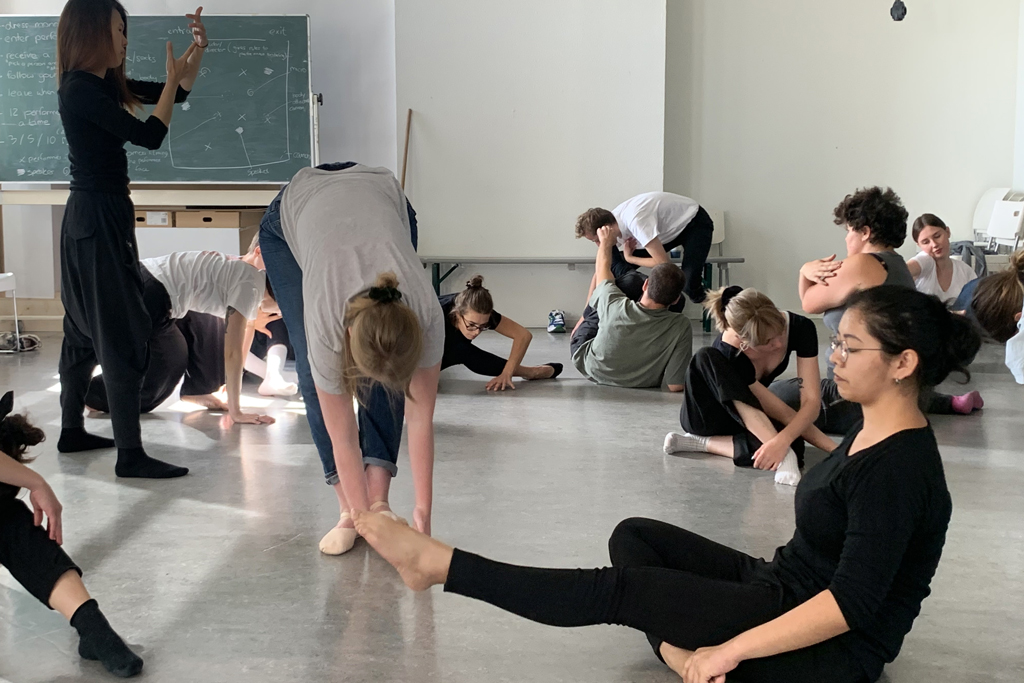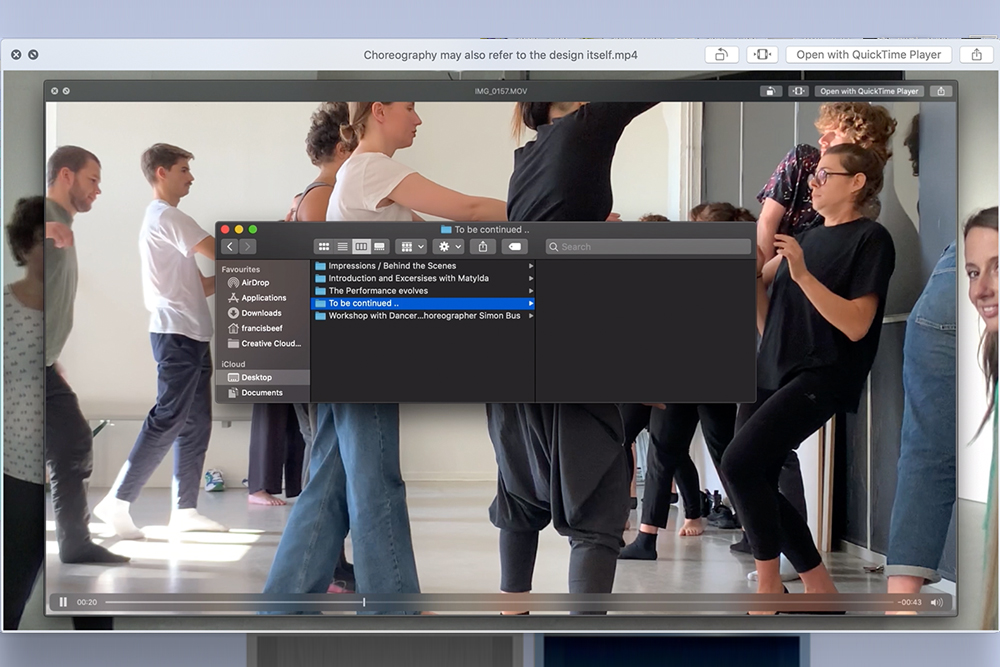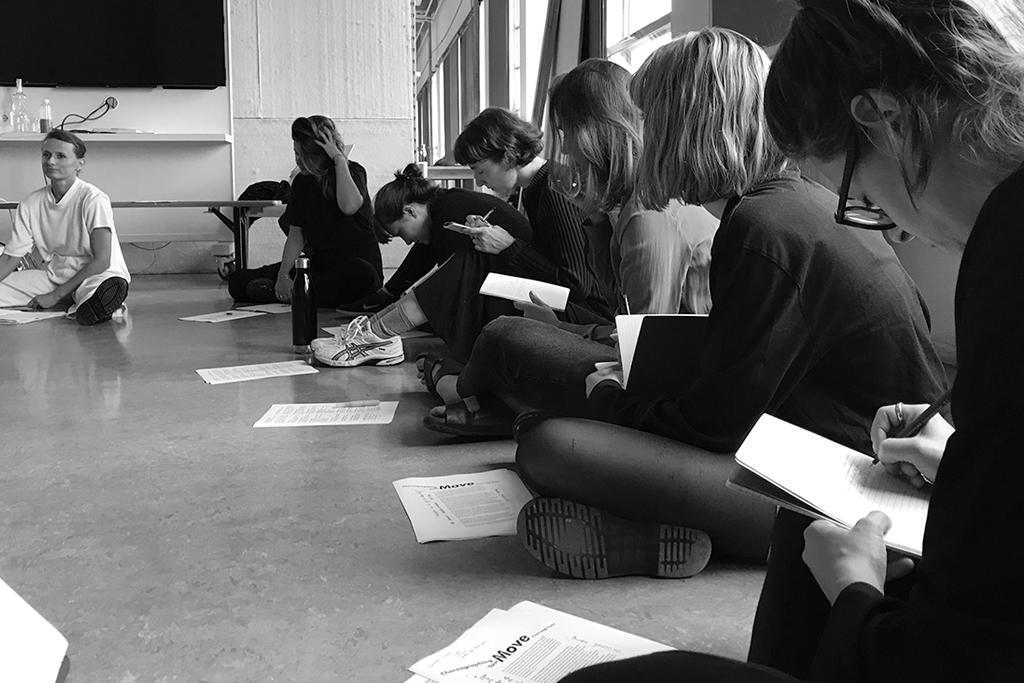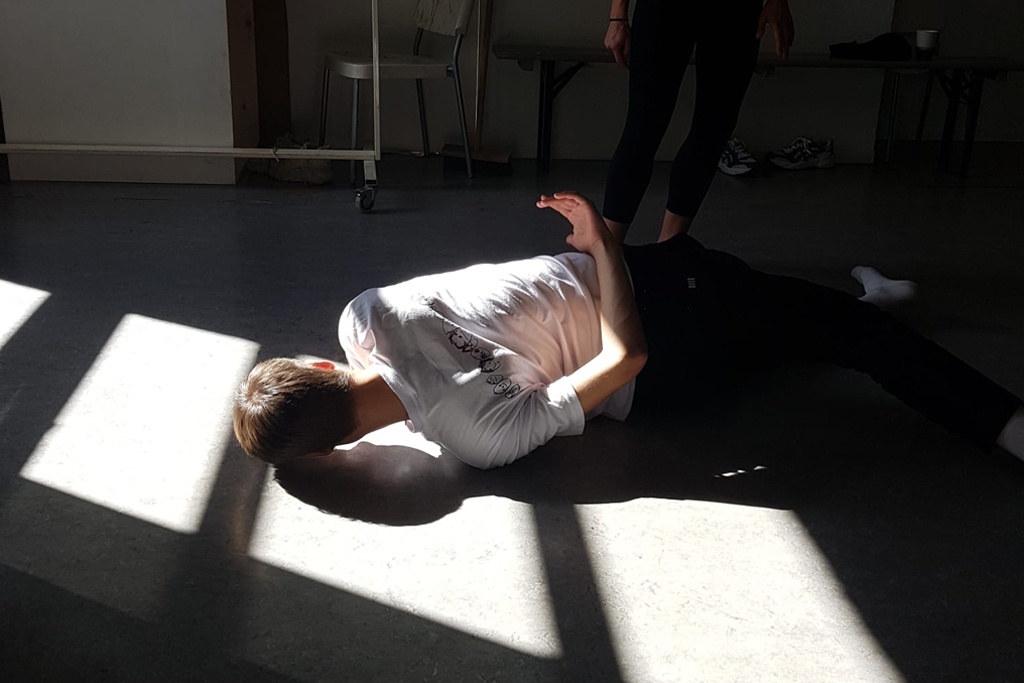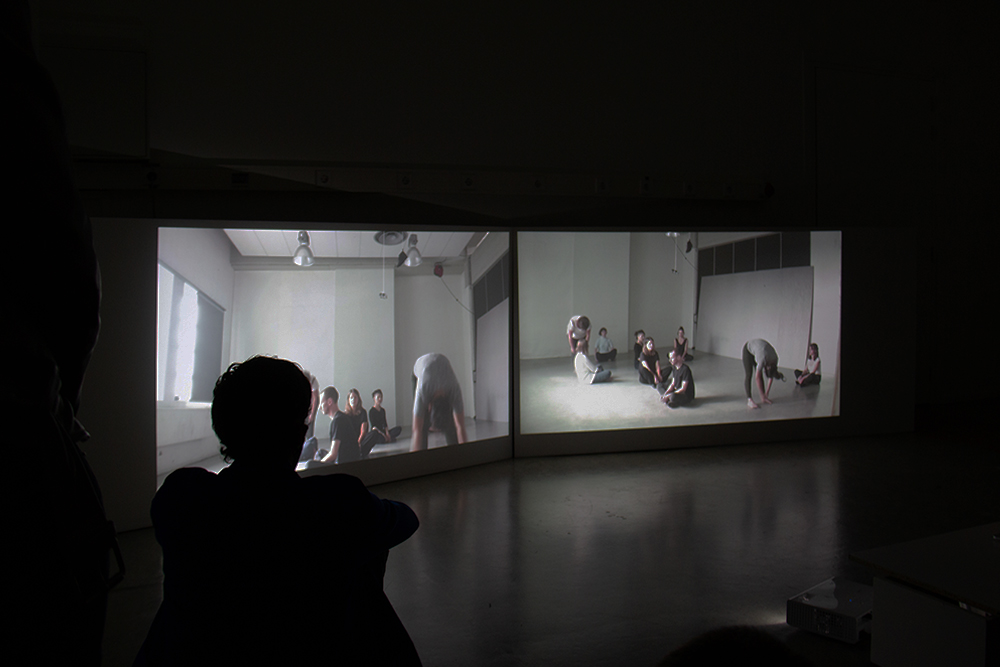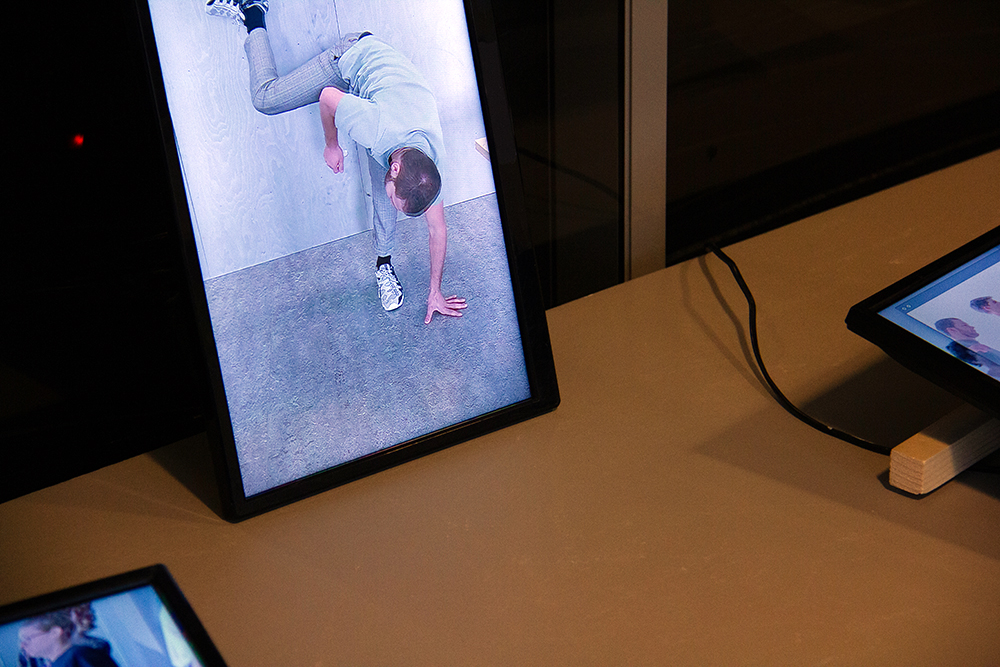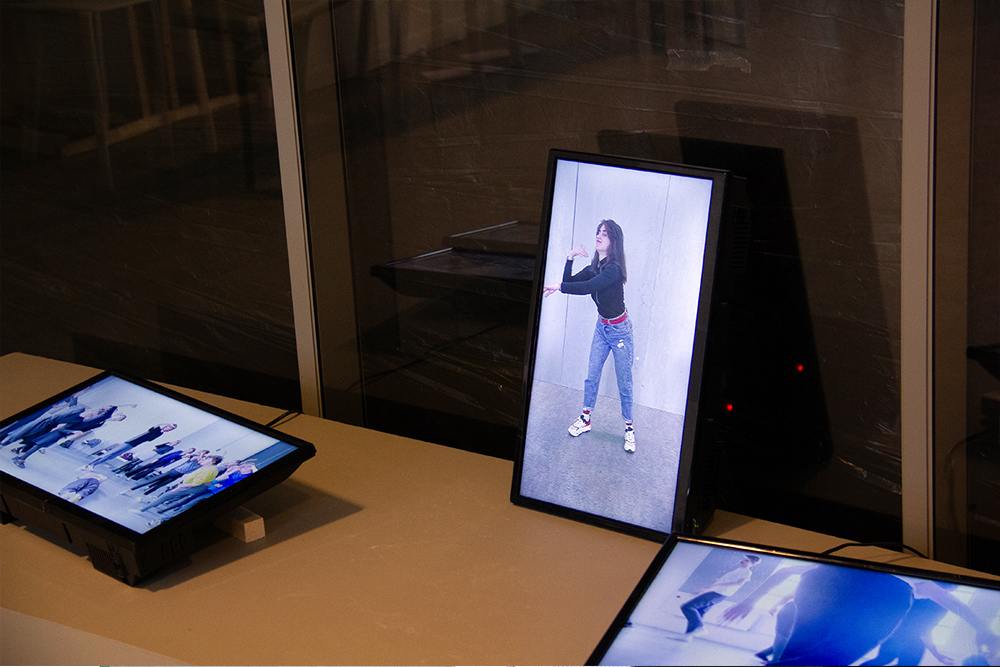Workshop & Exercise Series
Since 2013 – Ongoing
Various places and settings
10 – 18.9.2021
I do my Thing, we do our Thing by students of The Critical Inquiry Lab, Design Academy Eindhoven, The Netherlands & CIVA Brussels, Belgium
9 – 11.9.2020
If Power would be Care by students of The Critical Inquiry Lab, Design Academy Eindhoven, The Netherlands
18 – 21.2.2020
Mega Practice Fantastico Theater by students of The Centre of Philosophical Technologies, ASU Arizona, USA
Note:
I applied with a choreography-related proposal to the Jan can Eyck academy in 2013. Back then I was artistically directing Depot Basel, the place for contemporary design, that I co-founded. At that time we unexpectedly received a high amount of funding for a 3 year period of programming, which demanded concentration to cultural formats, rather than choreographic experiments. An invitation by The Centre of Philosophical Technologies at ASU Arizona (USA) was the opportunity to shift my practice towards experiments around choreography in relation to the build environment again. In February 2020 I brought Mega Practice Fantastico Theater to ASU Arizona where students brought an object, gave it an alternate role and performed the meaning together after group rehearsals. In September 2020 objects were obsolete and empathy became the objective.
Due to Covid_19 Janfer Chung, a students of The Critical Inquiry Lab, was still in Hong Kong when I conducted the workshop at Design Academy. In an e-mail exchange I suggested to Janefer that she should join us online and write a report about the workshop from the point of view of an observer. When you scroll down you find the text for ‘If Power would be Care’, the piece we developed im the workshop. But first read Janefer’s observations:
To Synchronise our Movements
From 9286 km away from Eindhoven, through my laptop screen, I was able to perceive the workshop “Choreography may also refer to the design itself”, led by Matylda Krzykowski. This review is based upon my observations through the flicking images and choppy voices from the fixed location and limited size of my laptop screen. While Matylda Krzykowski and the class were perceiving my existence through a laptop on the other side. This setting amplified my voice, extended my sight and my image into the classroom, and in reverse, it also extended the motions of the class into my living room. While Matylda Krzykowski’s intentions were to develop our thinking and bodily experiences through choreography as design, my physical limitation granted me an interesting position to make certain observations. Some of my experiences are interpreted through my imagination.
‘Choreography may also refer to the design itself’ by Matylda Krzykowski
On the first day, we started learning about Matylda Krzykowski‘s artistic practices and her critical interests. Then, we went through a series of experimental theatres practices, improvisation theatre exercises, movement exercises, writing practices and a group discussion about the way that those made us feel. In the evening of the first day, the class had a chance to view the performance of Febris by choreographer, Simon Bus, and Stop Making Sense by Aleysha Dobysh followed by a Q&A session after the performance where my classmates were able to ask and engage with the performers, sound and lighting designers. On the second day, Matylda invited Simon Bus to our class for a session to engage in dance choreography . We dedicated the time to designing and experimenting with choreographic sequences, followed by practice and rehearsal for the final performance. With all the joint physical and verbal effort, we developed the choreography of our performance, ‘If Power would be Care’, performed and video documented on the final day of the workshop.
The session with Simon Bus essentially became a pivotal reference for the formation of our choreographic design and the performance as a whole. His demonstration of “Threading”, a technique connecting parts of the body to make a hole, and going through the hole with another part of the body, fundamentally enacted our relearning to our body coordination, and a reexamination of our physical endurance. Through repetitive movement, a muscle reacted to another muscle and a movement enacted by another movement. The sequences evidently created a sense of isolation within the individual self, and collectively, a sense of authorship and ownership emerged.
‘If Power would be Care’ by students of The Critical Inquiry lab
The process of creating ‘If Power would be Care’ was unexpected and intuitive but guided by Matylda Krzykowski. The system of the performance was made up of 16 movements, each developed by the students.. Inspired by Simon Bus’s “Threading”, a student developed a variation of the movement, “Needle & Thread”. Another movement is “Puppet”, where the performer, being the puppet, stands taut and stiffly straight, and abruptly, they loosen the muscle strength of their upper bodies, seemingly like the puppeteer released their control of the strings from above. Other singular movements were the Cleaner and the Sponge. Some movements were designed to work in a trio or a pair like the “Jellyfish” along with the “Pusher” and the “Helper”, , “Domestication” with the “Snail” and finally “Unboxing” made up of a student in an imaginary box, and another defining the box using the first’s body and then releasing the boxed person. All together these movements constituted the whole performance. Some catalyst characters like the “Helper” and “Pusher”, create the act of “helping” and “pushing”, the Jellyfish or other performers in the space, these accelerate the reactions from each of the performers. Matylda Krzykowski became a facilitator to this.
The explicit act of repetitive motions may in fact signal the demonstration of power within one self. Concurrently, the demonstration of care and empathy, relations and coordination with the others, the boundaries of self takes shape. Through the performance, we inquired about the intertwined relationship between power and care from the perspective of personal, historical, political and societal, in the midst of strange and terrible times.
The Choreography Turn in our Design Study
As a starting program of our master study, Matylda Krzykowski’s attempts on testing how choreography could become part of the design curriculum expanded our horizons in design formation. Her workshop also multiplied the connections between content and material context, motion and emotion, space and physical entity, live action and documentation. In the 3 days of choreography workshop with Matylda Krzykowski, a collective sense of bonding, trust and intimacy generated within the group. We were quickly opened up to each other through the improvisation theatres on the first day, with exercises deployed a lot of eye contact and communication through the bodies. Matylda‘s presence, energy, her way of leading and the motivation she offered were stimulating. Simon‘s performance in the evening and the session with him in the following day were powerful and contagious. Above all, throughout the process of designing, practicing, performing and reviewing, the group derived collective consciousness and confidence through the final production of the performance.
Online Being vs. Physical Presence
(Final Thought : The SARS and H1N1 happened in my childhood traumatised me, I have been getting very anxious and paranoid. Since the beginning of the pandemic, I have tried to do the best precaution I can to avoid getting infected. While Matylda asked me to write about my feelings of seeing the close interaction within the class, to be honest, if I am physically present in the class, I might not be able to enjoy or to interact with the group comfortably. On the contrary, I saw the trust, bonding, openness emerged within the class and the collective, I felt abashed by my fear. I really hope to join the class as soon as possible, and to grow together with the class.
Above all, it has been a unique position for me to participate in this interactive workshop digitally. What I see choreography may offer to the design curriculum are the instantaneous and variations it contains. The sensual experience emerged in the process of constitution, and the choreographer’s direct contact with the observer, and the knowing of their existence (the audience, or the recording tools), would inherently shape and reshape the performances. These qualities of spontaneity and the uncalculated might be important to include in the development of design.
By Janfer Chung
______________________________
What if power would be Care…
A Moving Encounter
Performance & Multimedia Installation
October 2020
In the rebirth of this inner universe fall space and time, clearing possibilities for new cosmic reflections. We wonder: Can power and care co-exist within oneself? What is the role of power in a world dictated by care? How do power and care overlap and form an intertwined whole? At the heart of this revival, a sedimentation of iterations takes place. As past mores come undone, the collective mind undergoes a renewal through the body. The particles, floating in space, contemplate their endeavours. Among themselves, a dichotomous dialogue ensues reflecting on the spectrum of power and care. In an astral ballet, a constellation of questions expands exponentially within them. Through an encounter of motions, a narrative emerges echoing the troughs and falls of their inquiry.
Based on the workshop: ‘Choreography may refer to the design itself’ by Matylda Krzykowski.
Conducted with and by: Franziska Bax, Maxime Benvenuto, Oshin Siao Bhatt, Fernand Bretillot, Matilde Brizzi, Janfer Chung, Camille Guibaud, Lina von Jaruntowski, Jessica Rosalie Jones, Neal Jordan, Yeseul Kim, Eva Lotta Landskron, Jone Miskinyte, Pedro Matos Meireles De Barros Lobo, Niels Postma, Emma Sfez, Camille Wiesel
Students of the MA The Critical Inquiry Lab
Lead by Saskia van Stein
Coordinated by Gijs de Boer
At the Design Academy Eindhoven.
Special thanks to Simon Bus for his support in the development of this performance.
Thanks as well to Alesya Dobysh and Roy Overdijk.
